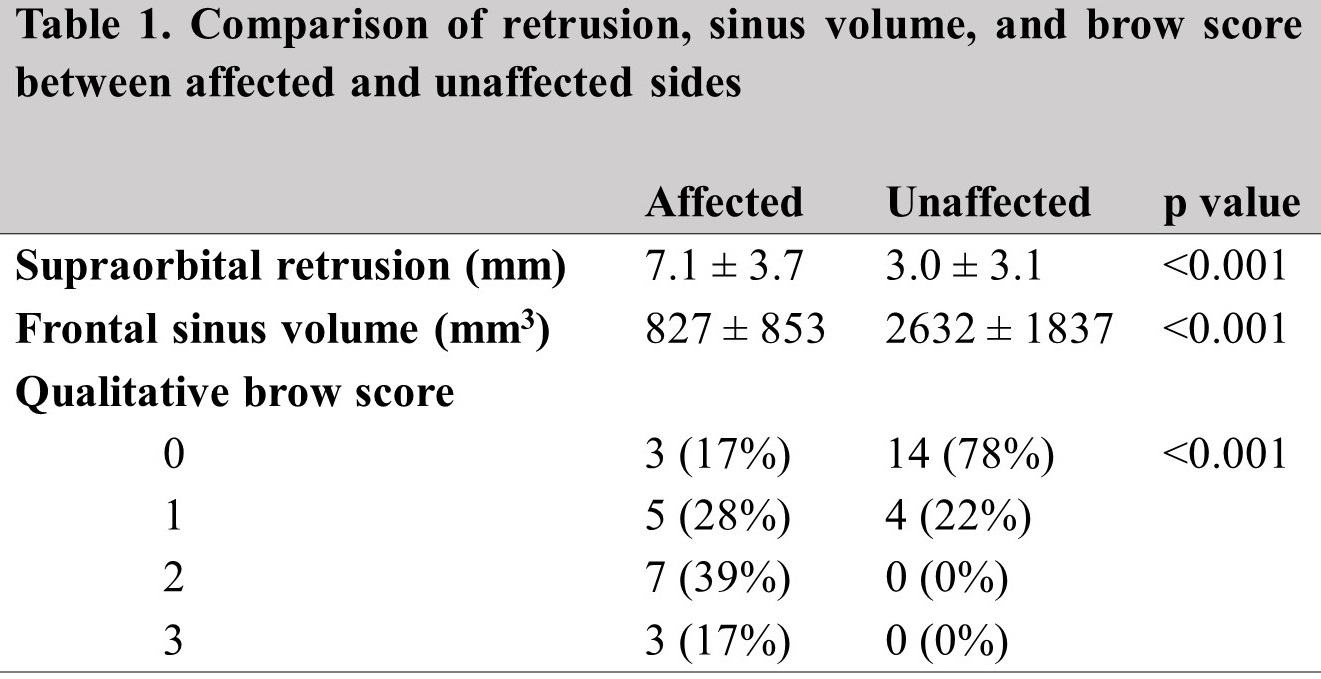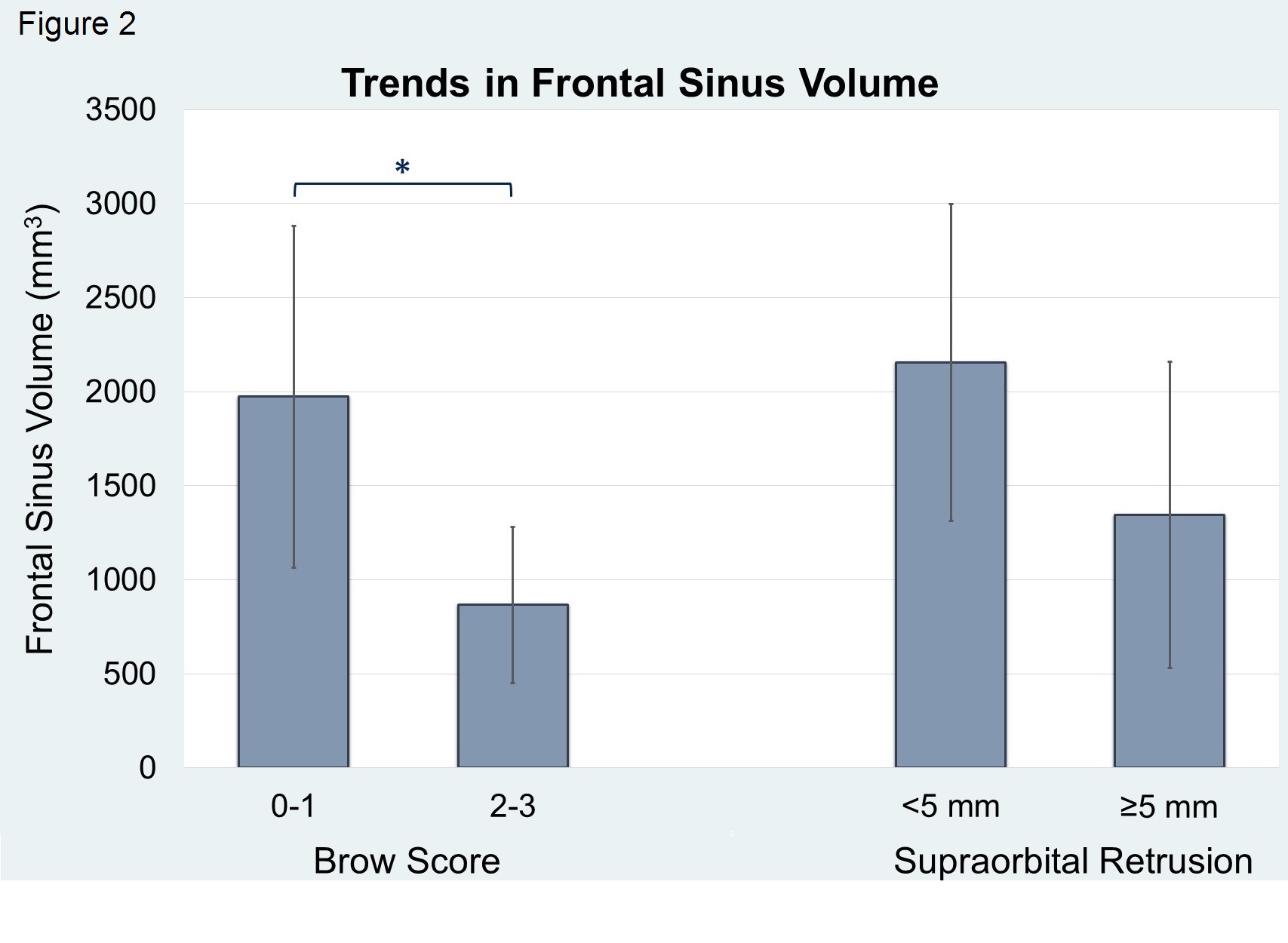Back to 2016 Annual Meeting
Relating Frontal Sinus Anatomy to Aesthetic Outcomes in Unicoronal Craniosynostosis
Wen Xu, Daniel Mazzaferro, Patrick Gerety, Jing Li, Scott Bartlett, Jesse Taylor.
Children's Hospital of Philadelphia, Philadelphia, PA, USA.
Background: Disruption of the naso-frontal junction in infancy has been proposed to injure frontal sinus buds, leading to decreased frontal sinus pneumatization and poor aesthetic outcomes. We aim to study the relationship among three factors: frontal sinus volume, qualitative brow aesthetics, and a quantitative measurement of supraorbital retrusion.
Methods: A retrospective review of unicoronal craniosynostosis (UCS) patients treated at a tertiary referral center was conducted. Inclusion criteria mandated a complete medical record, a head CT performed between ages 5 and 18 years, and high-quality photographs taken prior to repeat fronto-orbital advancements and/or revision cranioplasty. Frontal sinus volume and supraorbital retrusion were calculated using 3D-CT reconstructions created in Mimics® (Materialise, Belgium). Supraorbital retrusion was measured as the distance from the corneal apex to a vertical line intersecting the most anterior aspect of the supraorbital rim. Brow morphology was assessed with consensus scoring of two craniofacial surgeons using the following scale: 0 (no retrusion), 1 (mild retrusion), 2 (moderate retrusion), and 3 (severe retrusion). Statistical analysis included paired t-test, two sample t-test, Fisher exact test, and one-way ANOVA.
Results: The study included 20 unicoronal craniosynostosis patients; 7 (35%) were male and the average age was 13 years. Four (20%) subjects had left-sided UCS and 16 (80%) subjects had right-sided UCS. Supraorbital retrusion differed between the affected side (7.1±3.7mm) and the unaffected side (3.0±3.1) (p<0.001). Frontal sinus volume was greater on the unaffected side (2.6±1.8cc) compared to the affected side (0.8±0.9cc) (p<0.001). Qualitative brow retrusion scores differed between affected and unaffected sides (score 0: 17% affected vs. 78% unaffected, score 1: 28% affected vs. 22% unaffected, score 2: 39% affected vs. 0% unaffected, and score 3: 17% affected vs. 0% unaffected, p<0.001) (Table 1). Qualitative brow scores also trended with retrusion measurements with brows scored 0 having an average retrusion of 2.7±2.9mm, brows scored 1 having an average retrusion of 6.1±3.5mm, brows scored 2 having an average retrusion of 8.9±3.2mm, and brows scored 3 having an average retrusion of 9.7±2.8mm (p<0.001) (Figure 1). Additionally, subjects with brow scores of 0 or 1 had an average frontal sinus volume of 2.0±1.8cc while those with brow scores of 2 or 3 had an average frontal sinus volume of 0.9±0.8cc (p=0.018) (Figure 2).
Conclusions: Qualitative brow morphology correlates with both quantitative supraorbital retrusion and frontal sinus volume. Therefore, any barrier to frontal sinus development may result in poor long-term aesthetic outcomes.
Table 1

Figure 1

Figure 2

Back to 2016 Annual Meeting
|
